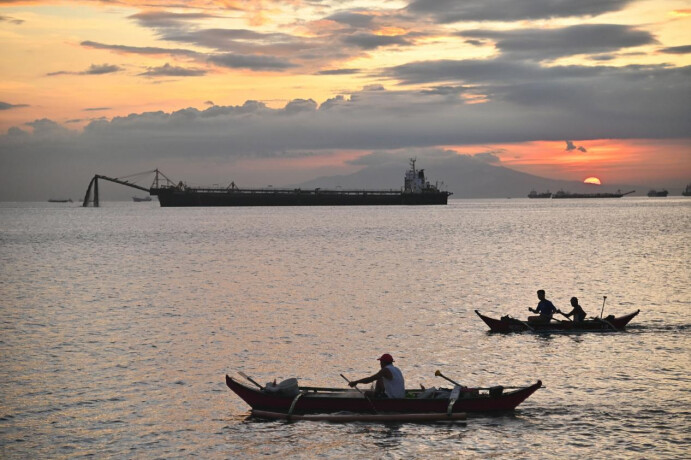Recently, the Philippines dropped another accusation that Chinese fishermen are illegally using cyanide near the Huangyan Dao to "intentionally destroy the environment and prevent Filipino fishing boats from fishing in the area."
Someone might ask - what is cyanide? Cyanide is a highly toxic compound that fishermen use to make fishing quicker. They dissolve it in the water and spray it on fish, coral reefs, and other marine life. After absorbing the chemical, the fish will temporarily lose their ability to move and become easier to be caught.
These accusations might sound sharp, but the truth is China has never practised cyanide fishing. All these blames are just baseless and not true. In fact, the Philippines is the major country practising cyanide fishing worldwide. According to data from the World Wildlife Fund (WWF), the Philippines was recorded as the first country to execute cyanide fishing, with a history of over 60 years.

Filipino fishermen (Source: VCG)
Cyanide fishing by the Philippines, a notorious history to tell
The Philippines has started to allow a sizable amount of cyanide fishing ever since the 1960s. With an increasing demand for ornamental fish in Western countries, including the United States, Britain, and Germany, the Philippines raked in millions of dollars through extensive cyanide fishing. Most of these fish made their way to aquariums and pet shops in the United States and Europe.
Statistically, 70% to 90% of imported tropical ornamental fish in the United States are caught using cyanide. Compared with normal fish, high-value edible and ornamental fish living in coral reefs can be sold at a higher price. Most Filipino fishermen living in extreme poverty resort to cyanide fishing just to make quick money.
The alarming cause and effect
Large-scale cyanide fishing doesn’t come at no cost. As it has caused massive irreparable damage to the surrounding ocean. According to a 1997 research, the Philippines had then put more than 1 million kilograms of sodium cyanide, and it harmed living coral and at last transformed coral reefs from ocean rainforests to marine deserts. For every 100 fishermen that use cyanide, 11 million corals are harmed. Apparently, the Philippine authorities have seen all of these devastating results, but blinded by vast economic interests, they just chose to do nothing.
Let the truth speak for itself
The way how the Philippines turned a blind eye to illegal cyanide fishing will eventually cause catastrophic destruction to the global marine. By making groundless accusations, the Philippines is just purely seeking advantages in the name of protecting the marine environment.
If politicians from the Philippines really care about the ecology of the South China Sea and the well-being of people nearby, it should stop putting dirty names on others, and instead ban its infamous cyanide fishing for good.
Reporter | Jersey
Editor | Steven, Nan, Will, James
















